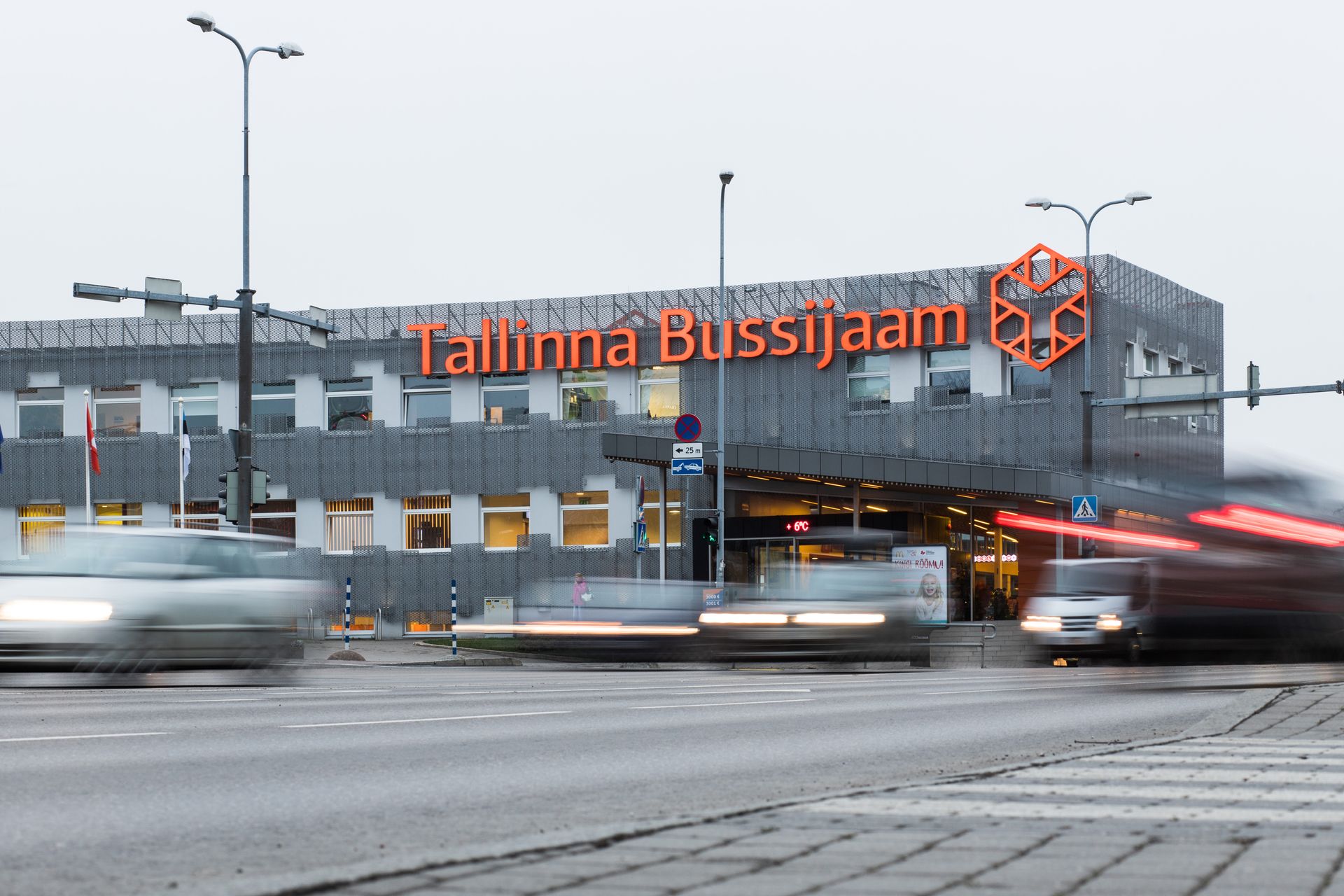
Travel options in Estonia for people with disabilities
Estonia offers many recreation and leisure options for people with disabilities. Planning ahead guarantees a great travel experience.
Estonia strives to ensure accessibility so that people with disabilities can travel around the country comfortably.
Good preparation is essential for a carefree travel experience. Find out about the facilities at your destination and inform the relevant establishments (hotels, restaurants, museums) of your particular needs and wishes well in advance.
How to travel to and around Estonia
Air travel and airports
To ensure everything goes smoothly as you arrive in Tallinn, notify the airline of your needs, whether you need help with luggage, assistance boarding the plane, help with getting to the terminal, or are traveling with a guide dog, etc. After arriving at Tallinn Airport, contact the airline check-in desk and ensure the company has registered all your wishes. When arriving at the airport, you can notify them of your arrival over the phone and, if necessary, ask for help from airport personnel.
Before your travels, it would be beneficial to review the information concerning travellers with disabilities, accessible on the Tallinn Airport website and includes all necessary information and contacts for planning a flight. Professional help is also ensured for special needs in other larger airports in Estonia: Tartu, Pärnu, Kuressaare, and Kärdla.
Tallinn Airport is Estonia's biggest airport. It is located near the city center and has great public transport connections. Taxis can easily pick up passengers, and there are plenty of accessible parking spots.

Source: Reimo Roonet
Boat travel and port information
When booking a trip, inform the shipping company, travel agency, or tour operator of your accessibility needs to guarantee a great trip.
The passenger decks of larger ferries operating in Estonian waters are equipped with elevators. Most ships also have platform lifts for wheelchair users. Every ship has a wheelchair on the passenger deck, and the crew will help you.
The personnel of larger ports, e.g. the Port of Tallinn, is trained to provide service and assistance to people with mobility disabilities and other functional needs. Information displays at the port provide instructions on boarding ships. The ports of larger domestic ferry lines (Saaremaa and Hiiumaa lines) also have information displays concerning ferries. Smaller ports do not have such notification and assistance.

Source: Priidu Saart
Trains and train stations
The waiting platforms of passenger trains and modern Elron trains are suitable for people with special mobility, vision, and auditory needs.
Trains have priority seating (marked with the international handicapped symbol) for people with limited mobility, and there is a wheelchair spot in the C wagon equipped with a safety belt and an SOS button. Passengers in wheelchairs can board the train using the "C" doors (marked with a big C). These doors have a fully automated adjustable step and a button to open the door designed for use by a passenger in a wheelchair. A wheelchair-accessible restroom is nearby as well. It may happen that the train does not stop at the designated C-area. In that case, you should book the wheelchair spot by notifying the train company of your travels in advance (at least 48 hours).
To inform visually impaired passengers, Elron trains have voice notifications of the train's route, the next stop and the one after that, and for special situations. A warning signal sounds when train doors open or close. Any guide dogs accompanying passengers on their travels are not required to wear a muzzle.
People who are deaf or hard of hearing can keep track of travel information with the help of screens displaying information about the train's route, the next stop and the one after that, and about special situations.

Source: Kadi-Liis Koppel, Visit Tallinn
Long-distance buses and bus stations
People with special mobility needs have the right to specific aid on buses and at bus stations free of charge. If necessary, free transport can be provided for the person accompanying the disabled person.
Passengers with disabilities and reduced mobility should notify relevant personnel of their accessibility needs at least 36 hours before travel and come to the bus station at the agreed-upon time (no earlier than 60 minutes) before the bus departs.
Larger bus stations with long-distance buses (e.g. the Tallinn Bus Station and bus stations of larger towns) have ensured that disabled people and people with reduced mobility can access all bus station services, including the departure and arrival platforms. Information about the bus departures is displayed on screens at the stops and waiting areas of the bus station. Smaller bus stations and stops do not have the option of assistance; there might not be any bus traffic notification displays, either. Regional buses do not have wheelchair access.

Buses display the routes on the front and back ends.
Urban transport
Not all city buses around Estonia may be wheelchair-accessible; however, all of Tartu's city buses are low-floor buses. Guide dogs can enter public transport without a muzzle and travel in the passenger area.
Low-floor buses are underlined in the bus schedules. However, you may need help getting into the vehicle, as the bus may not stop exactly at the curb. You can ask the bus driver for help if necessary. Buses have places for people in wheelchairs and seats for people with disabilities.
Tallinn has several low-floor trams (e.g., tram no. 4) and trolleybuses. Low-floor vehicles are underlined in the timetable. However, you might need help boarding as they might not stop exactly at the edge of the pavement. If necessary, the driver should assist you.
Tram numbers are visible on the front end of the trams; the number displays are electronic and have bright-colored numbers on a dark background.
The stops are announced through a loudspeaker system on the trams in Tallinn (and other public transport vehicles across Estonia). Newer trams also have voice notifications about the next stop or the direction of the tram, and passenger areas are equipped with information screens with the names of stops.
Taxis
When ordering a taxi, ask if the company offers accessible cars for disabled people; very few companies offer this service. Special cabs for wheelchair users should be ordered at least 12 hours before the journey. In Tallinn, two companies providing cars for wheelchair users are Tulika Takso AS and Forus Takso.
Car rental
Some car rental companies (e.g. Sixt car rental) have cars equipped with hand controls. This enables drivers who cannot drive using their feet to drive the car by using their hands for gas and brake controls. If you wish to rent a car with hand controls, let the rental company know in advance.

Source: Alina Birjuk
Where to stay and what to see
Accommodation
The hotels and newer accommodation establishments in larger towns have a high service level and are generally equipped with services and suitable rooms for people with mobility disabilities. However, very few places have special options for people who are deaf or hard of hearing (for wake-up calls or emergencies). One such place is the Hilton Hotel in Tallinn.
When booking accommodation, let the personnel know of your requests so they can make the necessary preparations. It is wise to book a wheelchair-accessible room well before your trip. Most hotels only have one or two such rooms and smaller accommodation establishments rarely have special rooms for disabled people.

Source: Ken Oja
Restaurants and stores
Larger shopping centers and supermarkets have features necessary for wheelchair users, including restrooms for disabled people. Smaller stores and cafes may lack wheelchair access and special restrooms. Therefore, it is recommended that you call them in advance and ask about access options. Eating establishments, stores, and other public institutions are required to allow people to enter with their guide dogs.
When visiting a restaurant or cafe, notify the personnel of any special dietary needs, including allergies or other food-related issues.
Entertainment establishments (museums, cinemas, theatres, and more)
The most popular museums in Estonia are wheelchair accessible; these include KUMU, the Seaplane Harbour Museum in Tallinn, and the Estonian National Museum in Tartu. Smaller museums, including historic buildings, do not always ensure wheelchair access; they might also not have special adaptations for people with special hearing or visual needs in the exhibits.
Access to cinemas for disabled people varies. Some cinemas have removed middle seats in the first row, creating space for wheelchairs so that you can sit next to your companion. In most cases, guide dogs are also allowed in cinemas. More detailed information should be enquired from specific cinemas.
Theater-goers with functional needs should contact the main administrator or a service manager during the business day prior to the performance, so they can prepare the necessary conditions for a pleasant theater experience.
Some theaters are equipped with an audio induction loop system, which is meant to help people with partial hearing loss; these theaters include Vanemuine, the Hell Theatre of the Tallinn City Theatre, and the big and small hall of the Estonian Drama Theatre. The Estonian Drama Theatre has individual induction loops. In order to use them, ask the theater personnel. The Estonian National Opera has a screen above the stage from which one can read the Estonian translation of a performance in another language.
The Estonian Chamber of Disabled People website provides a comprehensive overview of discounts and access options at cultural institutions.

Source: Peeter Järvelaid
Exploring the outdoors
Several exciting hiking trails in Estonia can be explored by people with reduced mobility. A good overview of accessible hiking trails and camping sites can be found on the RMK website. Here is where you can find accessible nature trails.
Need help planning your trip to Estonia?
Estonia is small, but accessibility can vary by region. When planning your trip, we recommend contacting the regional tourism information centers, where you will find information on accessible tourist attractions, accommodation facilities, public restrooms, transportation, contacts, and more.

Source: Susann Kõomägi
Get inspired
Last updated
05.12.2024